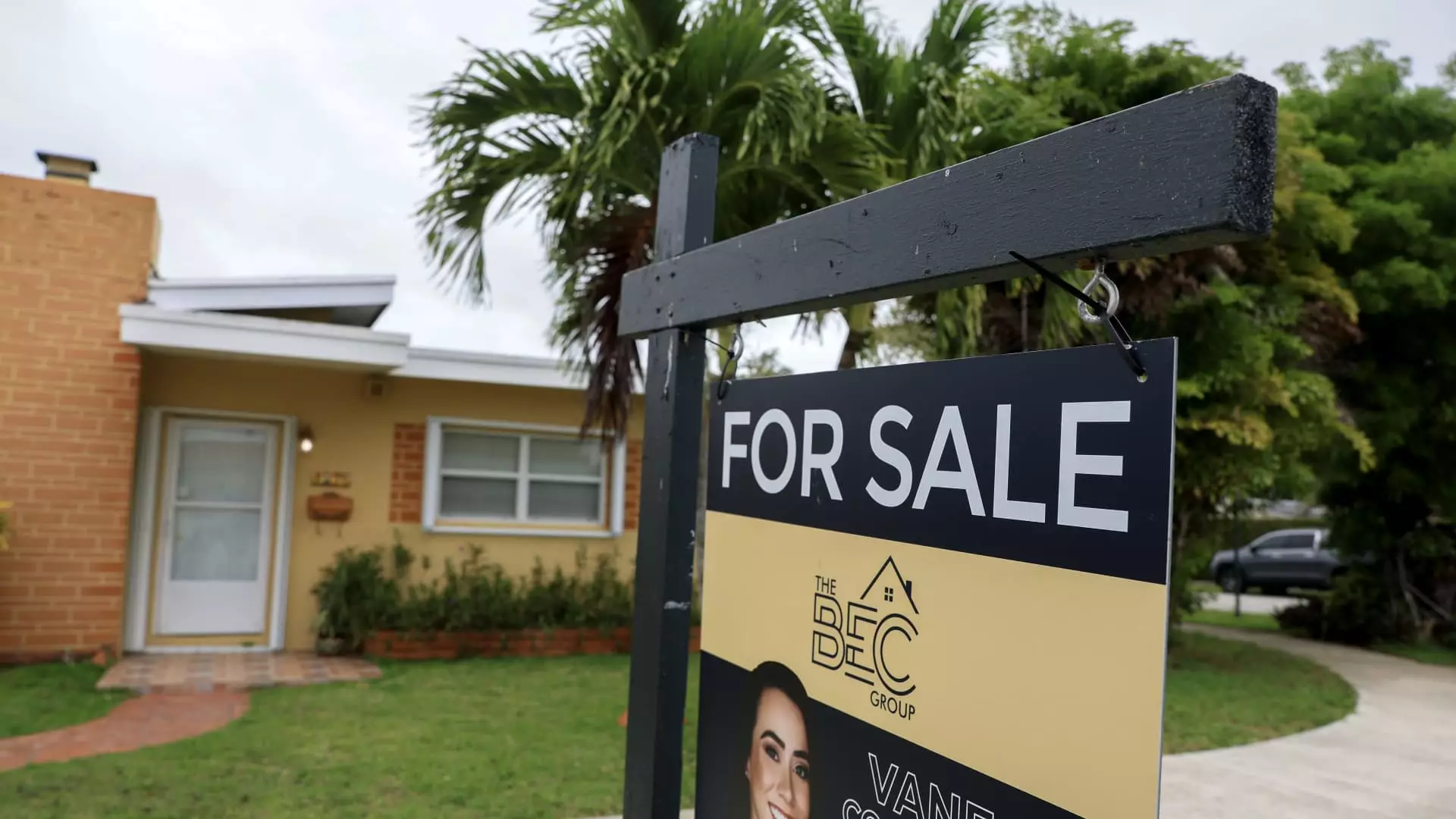It’s a perplexing scenario unfolding in the housing market: mortgage rates have dipped slightly, yet demand continues to wane. According to the Mortgage Bankers Association, total mortgage application volume recently took a nosedive of 3.9% week-over-week. This discrepancy begs questioning: why are homebuyers seemingly unfazed by lower rates? The average interest rate for 30-year fixed mortgages has even dropped to 6.92%, a fraction lower than the previous week, but this minor shift appears insufficient to entice wary borrowers.
What ultimately stands out is the stagnancy in the housing market despite reduced mortgage rates. Homebuyers are in a precarious position, grappling with inflated property prices amid economic uncertainty. The market remains ensconced in a narrow range of rates, which, rather than igniting a buying frenzy, has resulted in apathy.
Refinancing: A Mixed Bag of Opportunity
Refinancing should intuitively benefit from lower interest rates. However, the reality is quite the opposite; applications for refinancing dropped by 4% last week, even as they were 42% higher than the same week last year. This paradox highlights a critical observation: potential borrowers are waiting for a more significant drop, banking on the promise of even lower rates as they tread cautiously amidst economic instability.
This waiting game could have detrimental effects in the long run. Homeowners who might have taken advantage of refinancing opportunities are instead limiting their options. The average refinance loan size has plummeted to its smallest since July 2024, reflecting a broader trend of hesitance among borrowers.
The Housing Market’s Underbelly
Despite a surprisingly increased demand for home purchases—up 18% compared to a year ago—closed sales are still lagging behind last year’s performance. The burgeoning inventory has added a layer of complexity; with the highest supply in five years, conventional economic theory would suggest that sales should see a proportional uptick. Instead, buyers remain on the sidelines, unsure of a market that doesn’t seem to favor them.
What can be said about this strange dichotomy? The housing market is in a limbo-like state, where potential buyers are not just hesitant; they are paralyzed by the fear of making a poor investment in a wobbling economy. It raises a pressing question: is the current housing backdrop too treacherous for the average buyer? With a rising supply but stagnant price movements, we are, perhaps, witnessing buyers being outwitted by their own cautiousness.
The Economic Headwinds Ahead
Adding fuel to the fire is the sheer unpredictability of future interest rates and economic policies. The Federal Reserve’s approach to inflation and interest rates looms large over the housing market, casting a shadow that leaves consumers unsure and hesitant. Homebuyers are caught in a peculiar dilemma: should they take advantage of the current rates or wait, praying for a more favorable situation that could well remain just out of reach?
This peculiar imbalance indicates a systemic issue ripe for exploration. If modest reductions in mortgage rates aren’t coaxing buyers off the fence, perhaps it requires a more nuanced understanding of consumer psychology, alongside economic variables. The lure of homeownership—once a cornerstone of the American Dream—has become enshrined in uncertainty, as the muddied waters of the housing market leave many feeling disenchanted. In this landscape, the chatter of falling rates doesn’t translate into the action that the industry desperately craves.

